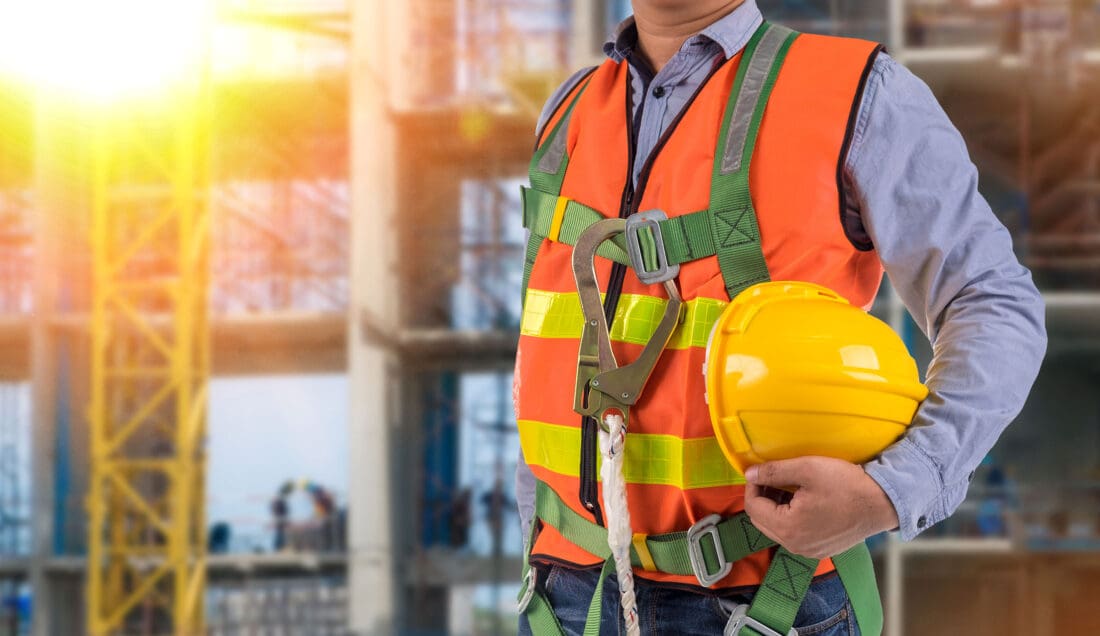Fall Protection: An Urgent Priority for the Construction Industry
Working high above the ground is inherently dangerous. And construction workers do so routinely. So, it’s no surprise that falls from height are among the most common causes of injury in the construction industry.
According to 2020 data from the Occupational Safety and Health Administration (OSHA), falls to lower levels accounted for 34.8 percent of construction fatalities that year. The actual number of deaths—351—may seem small relative to other hazards, but each one represents a real human being—a person with aspirations, potential, and family members who are left to grieve.
Beyond the human toll of these tragedies, they also cost employers in lost time and productivity. They cost insurance companies in rising claims, which in turn cost contractors in higher premiums. And this statistic doesn’t include the unnumbered incidents of workers injured by falls—which incur yet more of those same costs along with medical expenses. Most tragically, many of those deaths and injuries might have been prevented with the protection systems that are now widely available.
RAINWATER CONSTRUCTION IS A SAFETY-FIRST COMPANY
At Rainwater Construction Company we take the safety of our workers very seriously. We adhere to documented safety protocols, and our impeccable safety record is the result of a conscious, on-going effort to take care of our teams. Whether it’s weather protection, height protection, basic pre-workday stretching or the strict enforcement of personal protective equipment (PPE) rules, we are always looking out for ways to improve safety on the job and educate our team members about the standards and regulations that exist for their benefit.
OSHA’S FALL PROTECTION MANDATES
OSHA has specific regulations requiring fall protection systems for the construction industry. Among other requirements, whenever workers are six feet or more above a lower level, their employers must provide:
- Guardrails, safety nets, or personal fall arrest systems
- Covers for skylights and holes
- Guardrail systems for ramps, runways and other walkways
- Guardrail systems, fences, barricades, or covers for pits, shafts or similar excavations
Predictably, not all contractors abide by these requirements. As a result, failure to provide adequate fall protection was the top cause of OSHA violations in the construction industry for 2022. To remedy this situation, OSHA approved safety training and certification for fall protection can be obtained from various private vendors.
A LOOK AT FALL PROTECTION SYSTEMS
The most effective way to eliminate the risk of falling is to avoid working at height in the first place. While this obviously is not possible in all cases, many tasks can be performed using poles or tool extensions, or by using cranes and other machinery instead of people.
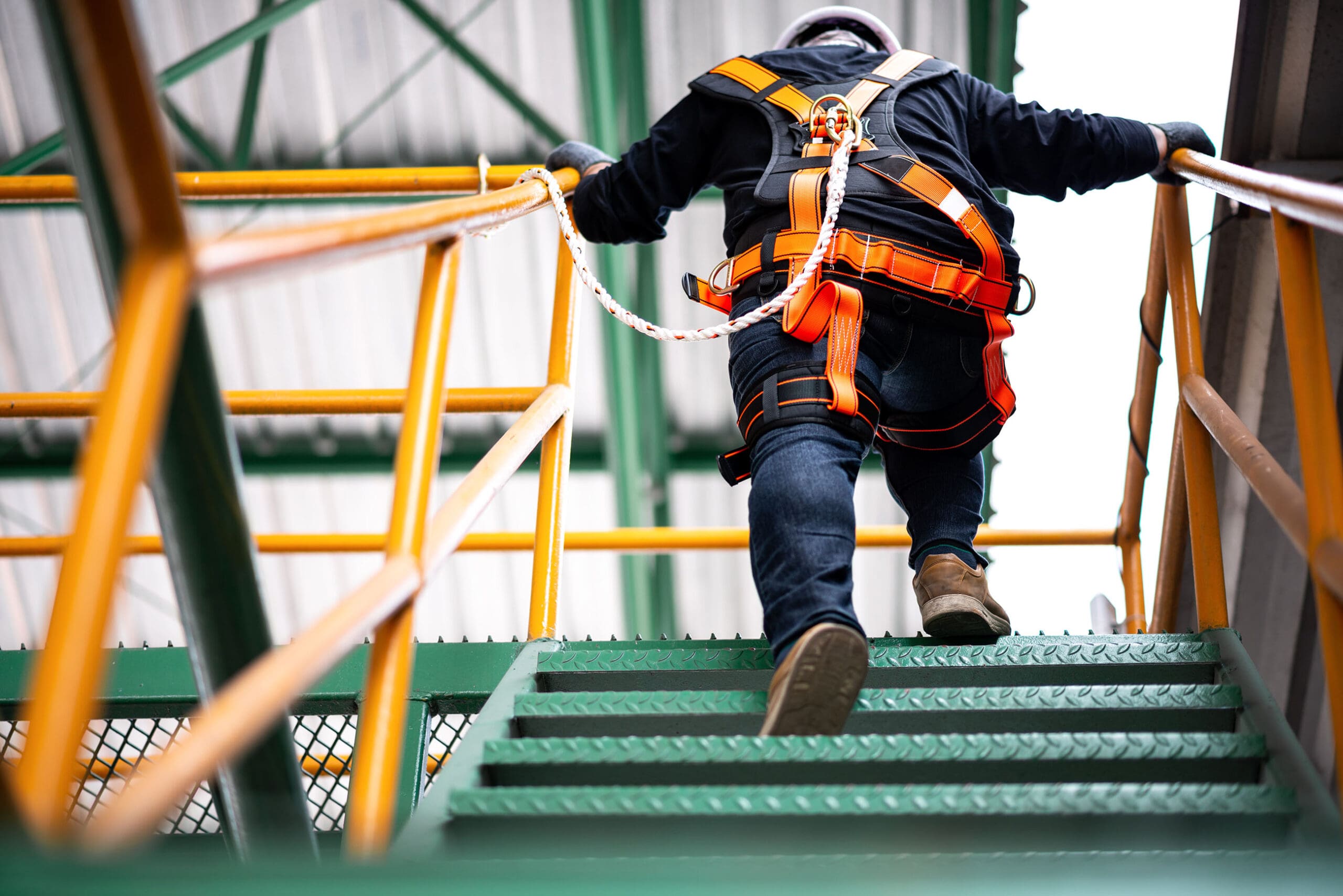
Guardrails can physically prevent workers from getting near hazardous areas or falling from scaffolding and walkways. These must be erected specifically for each jobsite—an added expense, but worth the trouble.
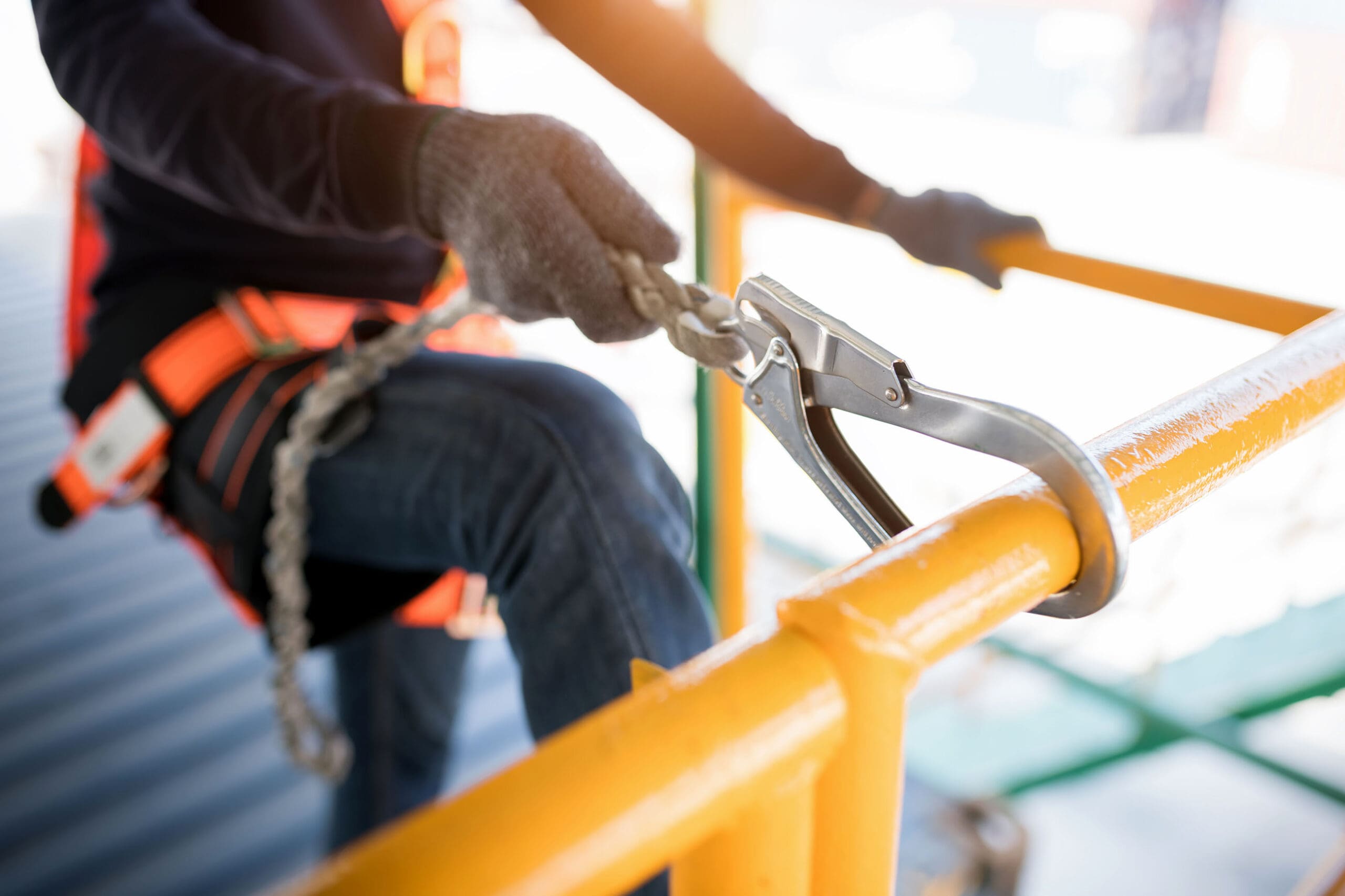
Fall restraints can be attached to individual workers, limiting their range of movement and effectively keeping them away from hazardous areas—such as the edge of a roof.
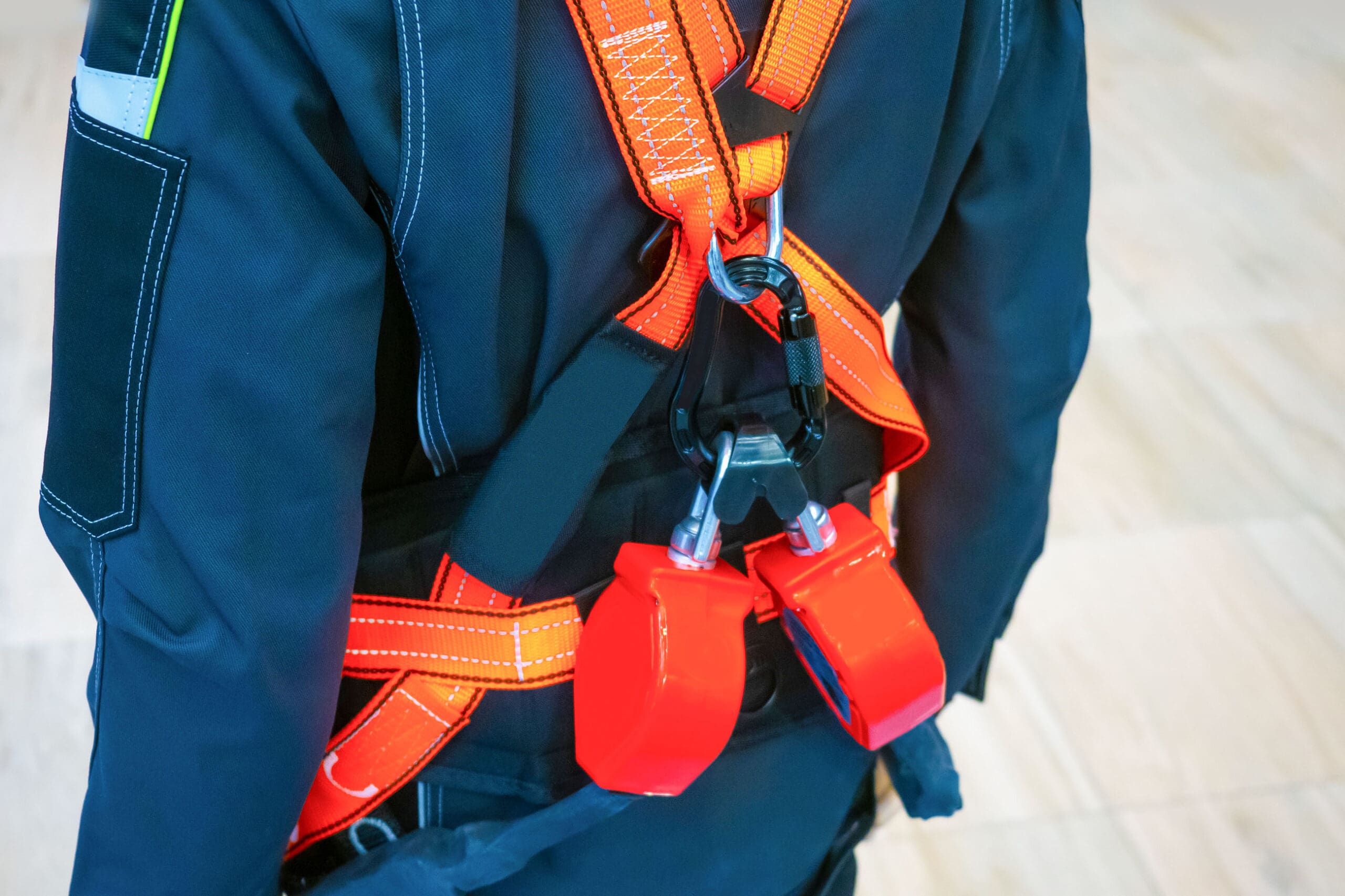
Fall arrest systems presume that an individual may fall but employ devices to mitigate the impact. An essential component of such systems is the safety harness, which a worker can wear and attach to an anchor point with a lanyard or lifeline. Safety harnesses are essential for roofers, tree trimmers, and people who work on high-rise buildings or aerial lifts (cherry pickers). The current standard is a full-body harness, similar to those worn by mountaineers and rock climbers. These harnesses distribute the stress of impact to the less-vulnerable parts of the body, representing a great improvement over the waist belts that were once common. Some lanyards lock automatically when extended, potentially limiting the distance of a fall and minimizing injury. And many systems employ self-retracting lifelines (SRL), which contain spring-loaded retracting web or cable lanyards wound around an internal drum. If a fall occurs, the mechanism automatically locks and arrests the fall.
A fall arrest system is only as good as the anchor it attaches to, so a wide variety of anchor types are available, depending on what they attach to: wood, steel, concrete, roofs, windows, etc.
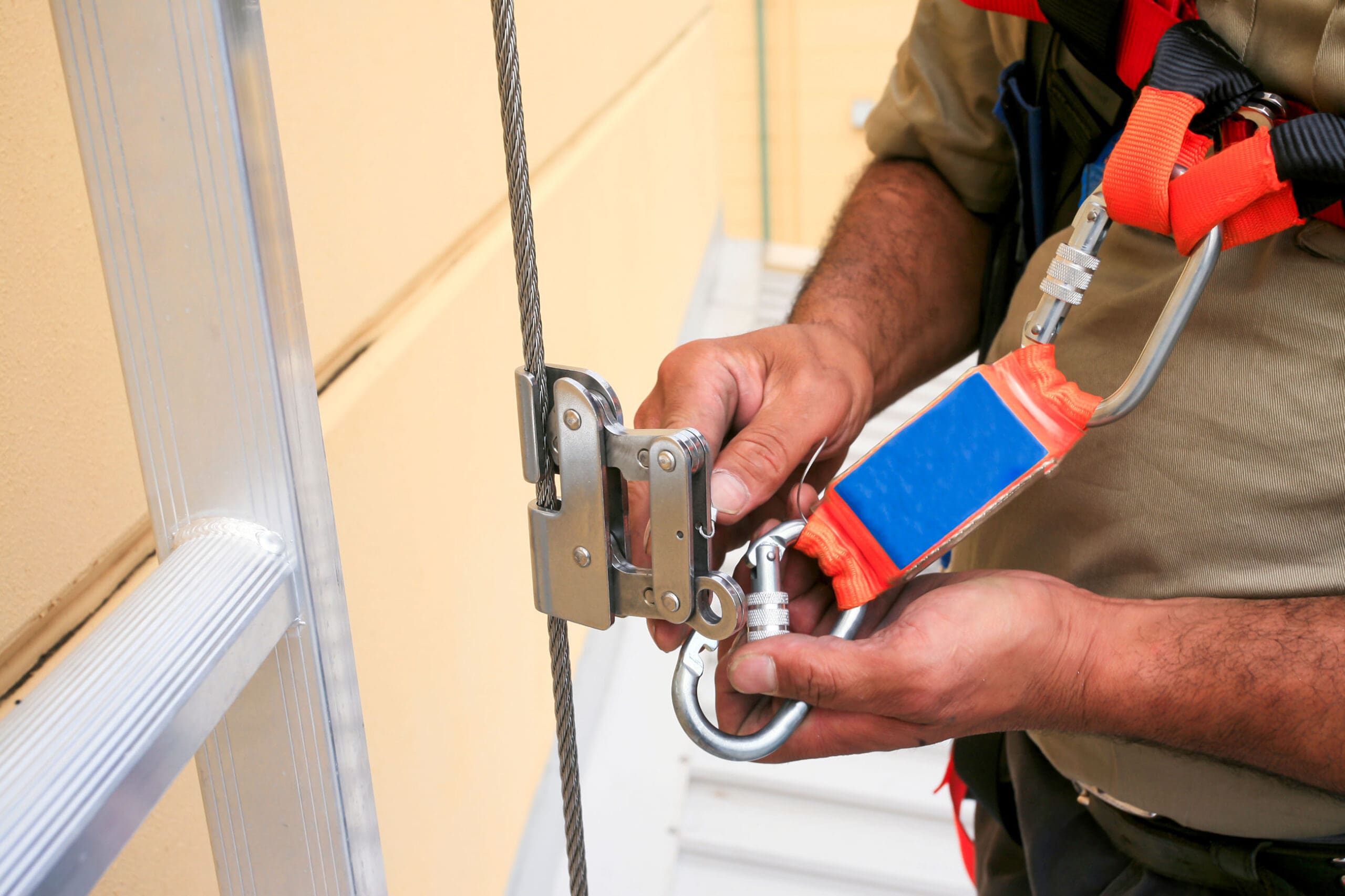
Much construction work involves the use of ladders, and the safe version of a ladder is known as a cable-climb system. A cable is attached to the ladder, and the worker can use a cable grab attached to the sternal D-ring on the harness to move up and down the ladder. If the worker falls, the cable safety sleeve will lock onto the cable and arrest the fall.
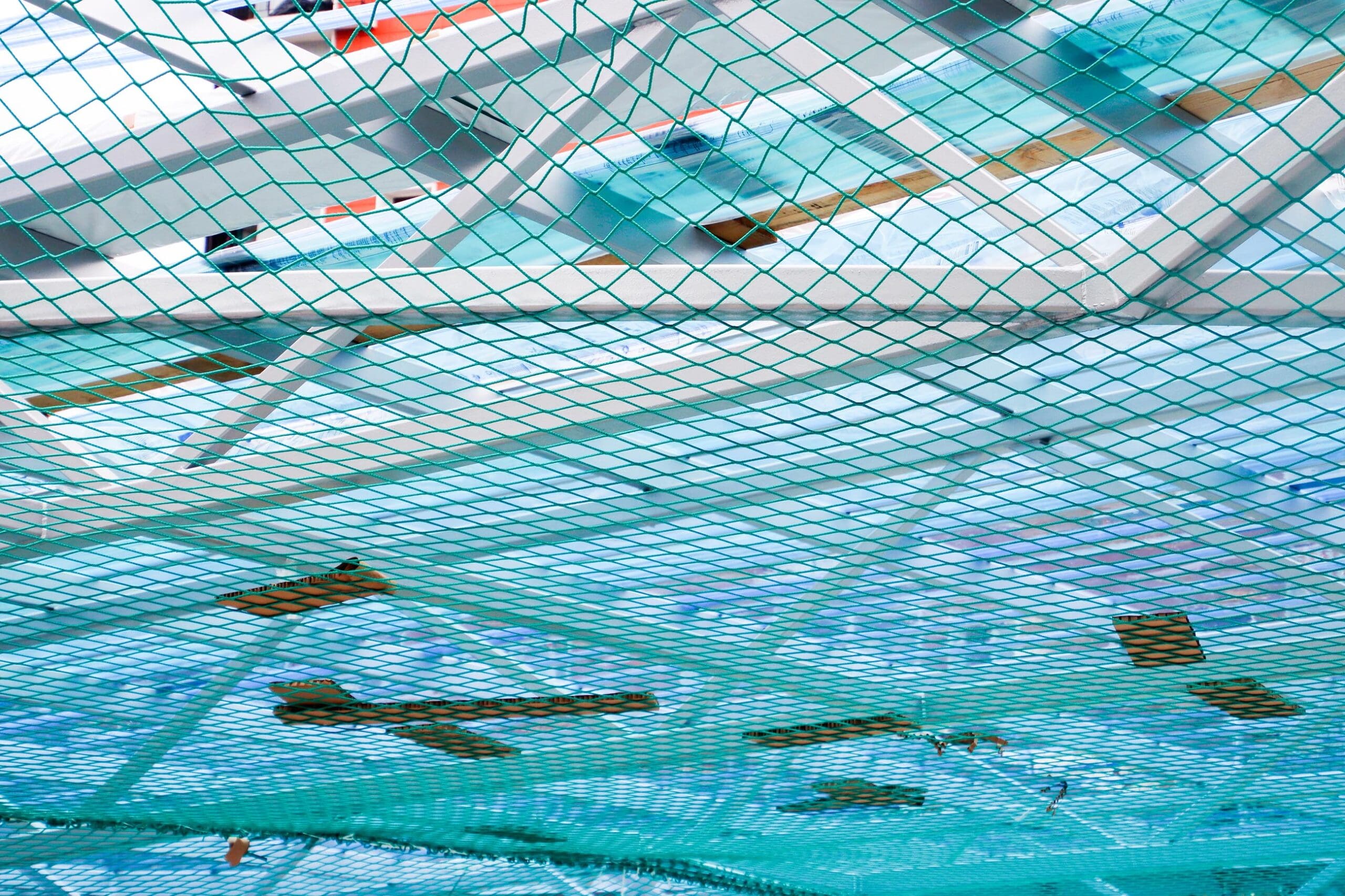
Safety netting performs the same function as the net in a circus trapeze act: catching people that fall before they hit the ground. There are numerous brands and types of safety netting available, all performing the same basic function.
BUTLER MANUFACTURING LEADS THE WAY IN SAFETY NETTING
Butler Manufacturing offers two mesh products that provide fall protection: Sky-Web® and Sky-Web II® protect against leading-edge-of-roof falls and reduce the distance of falls when they occur. When construction is complete, the mesh can then double as a support for roof insulation.
WHEN IT COMES TO SAFETY, PLANNING IS CRUCIAL
Beyond all these devices, it’s most important for construction teams to have a safety plan in place, to quickly and effectively treat fall victims when preventive measures fail. Workers as well as supervisors should be trained in these plans—and practice them.
And of course, the best protection is to avoid, whenever possible, situations that incur the risk of falling.
See how we’ve helped Atlanta businesses with quality construction since 1956
READ THIS NEXT
Stay up to date on the latest Rainwater Construction news and event – follow us on LinkedIn!


